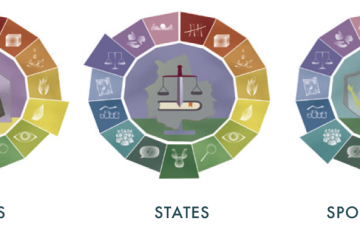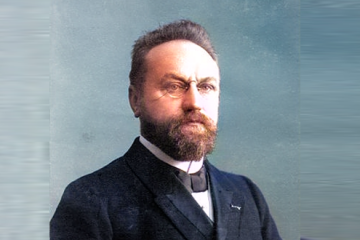The research postdoc I’ve been carrying out in Toronto this year has enabled me to start a new project – one which has made explaining my work to friends, especially Christian friends, a little more unpredictable. When I was working on my DPhil, I could answer people’s questions at church about my research very easily: ‘I research prayer’ always went down well! These days, when I say that I’m researching the story of an early Christian ‘harlot saint’, I get a few more furrowed brows, and I have to backtrack and explain further.
My research subject is the story of Thais, a Christian convert from the early centuries of the church. As the story goes, she was called out of a life of sex work by a desert monk, entering into a dramatic, and somewhat alarming, penitential life as a recluse. She burned her possessions in the marketplace and was sealed into a tiny cell – so extreme an enclosure that some versions of the story have her hesitating, asking the monk directing her where she is supposed to urinate, and being told, ‘in your cell, as you deserve’. In the cell, she prayed a single prayer over and over, for three years. Once she was released, she died within fifteen days.
A difficult story
This is not a story calculated to appeal to my church friends, or really my friends in general! I got interested in Thais through my work on prayer in the lives of medieval recluses. As I considered where my research should go after finishing my doctoral work, this was one of the avenues that intrigued me the most. But it’s a difficult story in a lot of ways. It’s messy, shocking, and alien. It’s not readily acceptable either to modern scholars looking for examples of female empowerment through religion, or to Christians trying to see how God has worked in past eras of the Church.
So part of my approach to what I hope will be a project that goes on further than this year, has been to try and embrace that difficulty – to build it into the foundations of my methodology. On one level the story is supposed to shock and even offend: it’s showing the drama of conversion at its most intense. On another, its alienness reminds us modern readers of the radically different priorities of historical people, undermining our assumptions about aspects of our worldview we see as obvious to all. Both these effects are uncomfortable, but they’re also useful.
Asking uncomfortable questions
Thais’s story has prompted me to ask questions like:
- how should I respond to stories about Christians who do things I find extreme, unbelievable, excessive, or even harmful?
- where is the line between freedom and submission in spiritual practice?
- how do we take sex, and sexual sin, seriously without compounding the misogynist, body-hating attitudes that have crushed many women and men through Christian history?
A large part of my research work isn’t dealing directly with these issues – I’m engaged in a lot of textual and manuscript work, and historical contextualisation, that doesn’t necessarily engage with the ideology of the text and how it sits so uncomfortably with modern mores. But my underlying assumption, which I’ve worked from ever since I went through a Thinking Faith Network course on the Reformational worldview before I started my Masters, is that anything I encounter in my work – a story, a manuscript, a theory – is always functioning on multiple levels of reality. Those levels can neither be reduced to each other nor separated from each other.
So Thais’s story can be understood as a curious historical artefact, a paradigm of Christian conversion, and a complex picture of sexuality embodied, rejected, and sublimated – just to name a few facets. The very difficulty of the story comes in part from the way its various identities hit up against each other, evolving over time as different readers encounter it. My goal is to use all the tools and lenses at my disposal to try and tell this difficult story, in all its complexity.
- Vision and revision: listening to T.S. Eliot - August 19, 2024
- A Reformational perspective on manuscript studies? - March 26, 2024
- ‘Men of ability’ and the incarnate Christ - January 29, 2024


